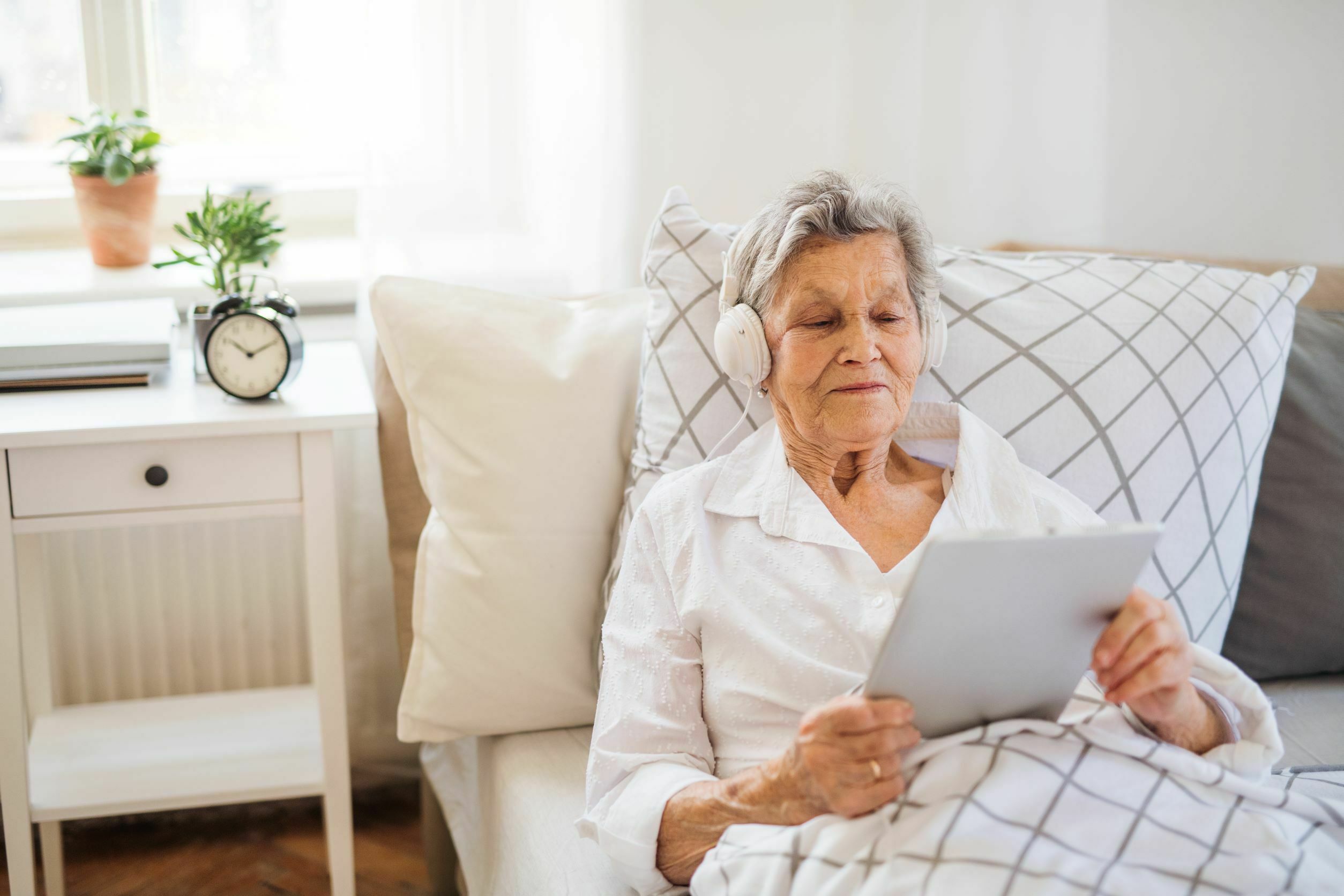Hospitalization is always associated with serious health risks. As the pandemic continues to cause problems in the healthcare sector, many hospitals have raised their bed capacities to accommodate the growing number of COVID-19 patients being admitted. As a result, many healthcare providers continue to invest in new concepts and technologies to improve the overall quality of care. However, given the growing popularity of hospital-at-home services today, is it possible that they will play an important role in chronic disease management?
What is Hospital-At-Home?
According to the Centers for Medicare and Medicaid Services (CMS), healthcare expenditures are expected to reach $6 trillion[1] by 2028, with hospital treatment accounting for nearly one-third[2] of total expenditures. So, hospital-at-home programs, which allow patients to receive treatment in the comfort of their own homes for conditions that would usually necessitate in-patient hospitalization, are becoming increasingly popular.
What are the differences between in-patient and hospital-at-home?
1. Hospital-at-home lowers depression and anxiety among patients
When a patient arrives at the hospital, it appears that it is normal to be anxious or worried. Its causes may appear to stem from various issues, including medical concerns, hospital expenditures, and the fear of being in for an extended period. Hospital-at-home is a promising innovation that increases patient satisfaction while simultaneously lowering depression and anxiety. It is reassuring for patients who have spent a significant amount of time in the hospital to know they can go home, sleep in their bed, be with their families, and have their pets by their side.
2. Lowered costs with hospital-at-home
According to a 2020 study, the cost of an acute care episode was 38 percent lower[3] for hospital-at-home patients than for in-hospital patients. This is because hospital-at-home programs do fewer laboratory tests and consultations. Simultaneously, hospitals save money by avoiding the need to expand bed capacity, so avoiding nursing homes for patients.
3. Lower risk of acquiring hospital infections
Acquiring in-hospital infections such as pneumonia and urinary tract infection lowers patient outcomes and increases hospital costs due to prolonged hospital admissions and serious complications. Hospital-at-home patients also are readmitted less frequently[4] because of a lesser incidence of physical inactivity brought about by being hospitalized, according to a 2021 JAMA study.
Chronic care management in the light of hospital-at-home is becoming more acceptable these days. While it’s not ideal for everyone, sending a patient to the hospital can interrupt management flow, especially if they are already receiving regular care at home. Therefore, establishing a patient-physician relationship before enrolling in a hospital-at-home program is crucial to a successful care plan.
RPM in hospital-at-home
Incorporating remote patient monitoring to hospital-at-home is a type of healthcare delivery that is becoming more popular as technology advances and the need for chronic care management increases. In fact, remote monitoring advanced healthcare5 during the pandemic. The benefits of RPM in a hospital-at-home setting are as follows:
1. Real-time monitoring
The technology for remote patient monitoring is expanding into new sectors, allowing for real-time monitoring via mobile devices or laptops. Remote cardiac monitoring and warnings are one area where remote patient monitoring is getting momentum, continuously improving the quality of care for patients suffering from heart conditions. This is because remote patient monitoring can assist in detecting the early warning signals of a heart attack, hence minimizing the risk of developing severe complications.
2. Patient-centric interventions
Remote patient monitoring has also been shown to be effective in the early detection of other health conditions, such as chronic obstructive pulmonary disease (COPD), hypertension, or diabetes. Remote physiological data is collected from the patient on a regular basis. This data is then transmitted to a remote care team, which can be helpful in the prevention of health conditions from worsening by allowing early patient-centric Interventions.
3. Shorter hospital stays
Remote patient monitoring promotes a less costly environment, which decompresses busy hospitals by allowing patients to be treated in the comfort of their own home, which is less expensive than traditional hospital care. In addition, remote patient monitoring helps reduce the amount of time patients spend in the hospital, leading to shortened hospital stays.
How RPM Improves Chronic Disease Management
RPM for hospitals and homes improves outcomes. A study published by the Mayo Clinic found that remote patient monitoring and telephone support by a remote care team resulted in improved patient outcomes for patients with heart failure[5]. Although not all patients are fit for hospital-at-home, as providers should be able to determine specific conditions that are life-threatening and would need to seek a referral to the emergency department, most would agree that continuing support thru RPM during hospital-at-home is not only reassuring but also allows the patient to be proactive when it comes to taking their health into their own hands with remote guidance from their providers.
DrKumo Can Help
DrKumo is a next-generation remote patient monitoring system that enables real-time monitoring and is ideal for implementing into your hospital-at-home program. With the evolution of technology and the introduction of new care models, home health care for your medical requirements will never be the same again.
Takeaway
Hospital-at-home is the way of the future in health care in 2022. It is less expensive, provides better care, and assists in reducing the amount of time patients are required to spend in the hospital, among other benefits. In a world where technology is growing at an incredible rate, hospital-at-home care for chronic disease management will only become more popular in the coming years, thanks to the availability of remote patient monitoring.
References:
- Projected | CMS. (2021, December 1). Projected | CMS. https://www.cms.gov/Research-Statistics-Data-and-Systems/Statistics-Trends-and-Reports/NationalHealthExpendData/NationalHealthAccountsProjected.
- FastStats. (2021, May 7). FastStats – Health Expenditures. http://cdc.gov/nchs/fastats/health-expenditures.htm.
- Hospital-Level Care At Home for Acutely Ill Adults: A Randomized Controlled Trial: Annals Of Internal Medicine: Vol 172, No 2. (n.d.). Annals of Internal Medicine. https://www.acpjournals.org/doi/10.7326/M19-0600.
- Arsenault-Lapierre, G., Henein, M., Gaid, D., Berre, M. L., Gore, G., & Vedel, I. (2021, June 8). Hospital-at-Home Vs In-Hospital Stay for Patients With Chronic Disease. Hospital-at-Home Interventions vs In-Hospital Stay for Patients With Chronic Disease Who Present to the Emergency Department: A Systematic Review and Meta-analysis | Emergency Medicine | JAMA Network Open | JAMA Network. https://jamanetwork.com/journals/jamanetworkopen/fullarticle/2780783.
- Studies Find That Remote Monitoring Advanced Care During Pandemic | AHA. (n.d.). American Hospital Association. https://www.aha.org/aha-center-health-innovation-market-scan/2021-09-14-studies-find-remote-monitoring-advanced-care.








